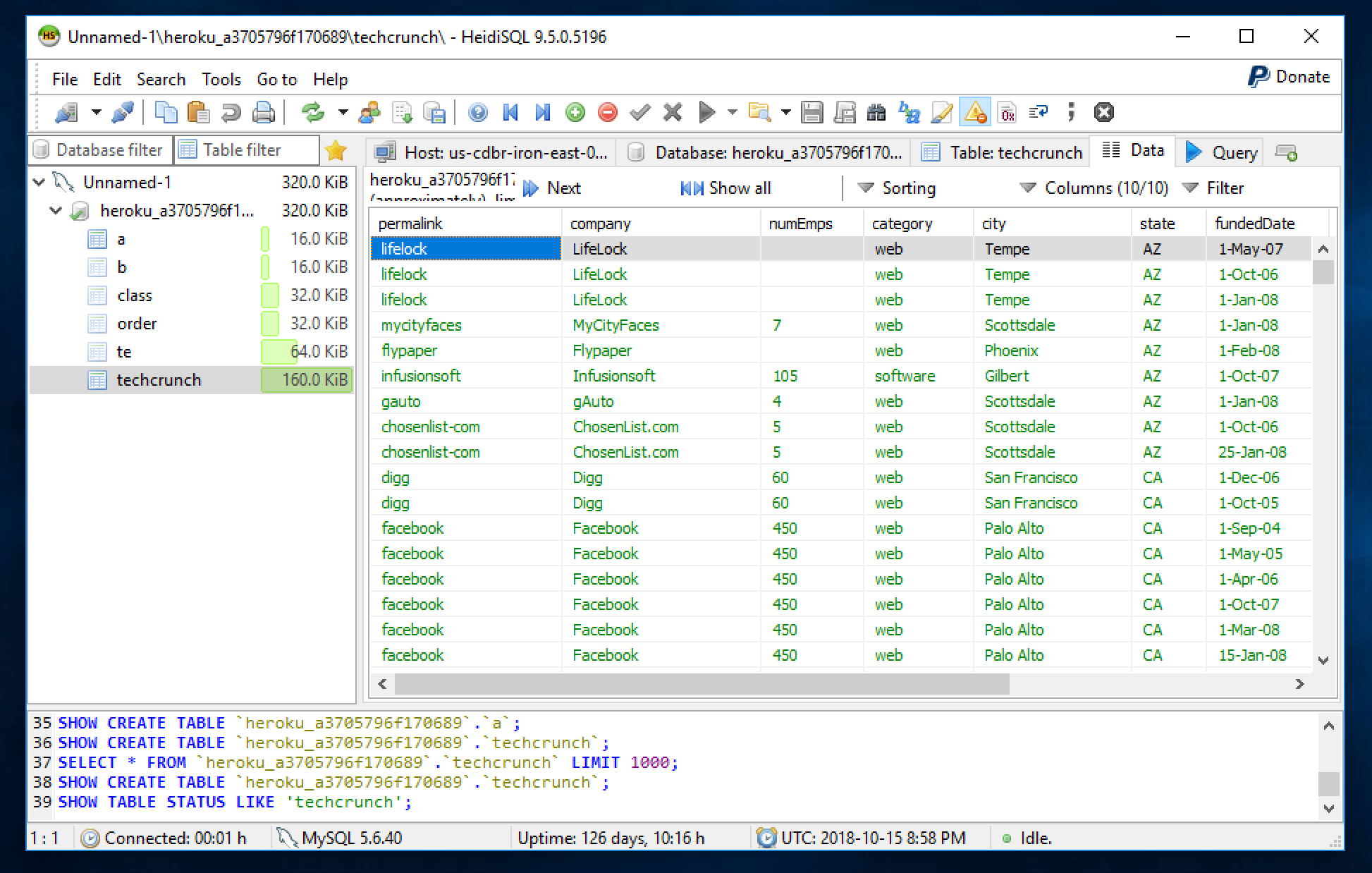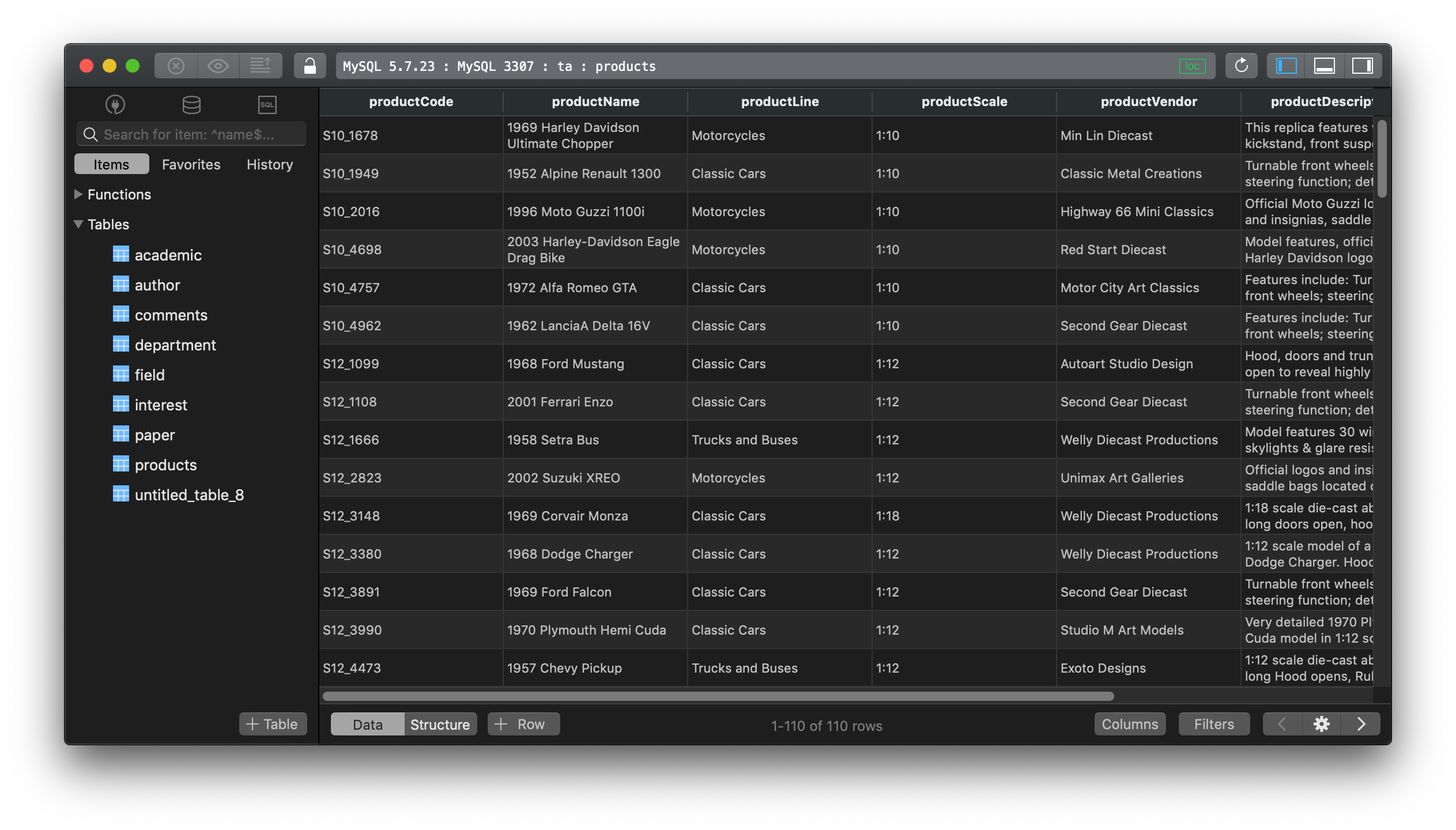HeidiSQL vs phpMyAdmin vs TablePlus - A quick comparison
In this post, we are going to have a quick review of three database tools: HeidiSQL, phpMyAdmin, TablePlus; and compare the pros and cons to see which is the best GUI client for your database management tasks.
1. HeidiSQL
HeidiSQL provides a powerful graphical interface for managing tables, logs, and users of a MySQL database, as well as Microsoft SQL Server and PostgreSQL.
-
Supported Platforms: HeidiSQL was built for the Windows platform, and it only works on Windows.
-
Supported Drivers: Initially, HeidiSQL offered support for MySQL, then extended to MS SQL Server, and now it also includes PostgreSQL support.
-
Pricing: HeidiSQL is a free and open-source client. Its codebase was originally taken from Ansgar Becker’s own MySQL-Front 2.5 software. Anyone can download and use the app for free with no limitation, but it also accepts the donation.

Pros:
- It’s lightweight.
- Connect to multiple servers in one window
- Free to use – Licensed under GNU GPL.
- Portable. Alongside the possibility of downloading the installer and source code, a portable version of the software is available.
- Full database user management and privileges management options.
- Write queries with customizable syntax-highlighting and code-completion
- Data synchronization. HeidiSQL can compare and synchronize your data and structure between local and remote databases.
- SSH tunneling support
Cons:
- Low stability. HeidiSQL is known to have a lot of bugs that result in frequent crashes
- It’s only available for Windows and it doesn’t look like a cross-platform is coming anytime soon
- No built-in debugger included
- Low DPI display. The author attempted to add the high DPI but dropped it eventually.
2. phpMyAdmin
With a web-based build, phpMyAdmin offers a handy tool to handle the administration of a MySQL database in a web browser.
-
Supported platforms: phpMyAdmin is a web-based administration tool, so you can get it run from any platforms with a web browser.
-
Supported Drivers: phpMyAdmin works with MySQL only. It supports MySQL 5.5 and newer.
-
Pricing: phpMyAdmin is free and open source. It’s available on almost every hosting service.

Pros:
- It’s portable. It can run on any computer and on any OS with a web browser.
- Easy installation. You need to have PHP and MySQL installed on your server, extract the files to a specified directory and run the install script.
- Stable due to its maturity.
- Comprehensive management of user accounts and permissions.
Cons:
- It’s web-based, so it runs slow and depends too much on the browser.
- Confusing and outdated interface. It may take some time to get used to it.
- No schema visualization.
- Does not have smart code highlighting or auto-completion capabilities.
3. TablePlus
With a native build and a lightweight size, TablePlus offers a fast and easy solution for managing multiple databases.
-
Supported platforms: TablePlus is built native for each platform. It started out with a native version for Mac, then another version for Windows, and a version for Linux was introduced recently as an alpha release. It also has an iOS version.
-
Supported Drivers: TablePlus supports a handful of relational databases: MySQL, PostgreSQL, SQLite, Microsoft SQL Server, Amazon Redshift, MariaDB, CockroachDB, Vertica, Oracle; and two popular NoSQL databases: Cassandra and Redis.
-
Pricing: TablePlus has a free version with full set of features which you can download and use forever, but there are some usage limitations. If you use it heavily, the license costs $59 to remove all those limitations.

Pros:
- Native build for each platform so it’s fast, lightweight, and stable.
- Clean and simple interface.
- Multiple drivers support
- Multiple conditions data filter
- Queries history and keyword binding favorite.
- Streaming results and async loading to show queries results faster and doesn’t block the UI.
- Very quick inline editing for table data and structure, you also can edit query results directly.
- Smart query editor with highlight syntax, instant autocomplete, SQL reformat.
- A plugin system to extend the app.
- Quick support. TablePlus releases new updates regularly and responds to users’ requests almost immediately.
Cons:
It currently lacks of some advanced features such as ER Diagram, database compare tool to Diff and Sync, etc.
4. Conclusion
Go with phpMyAdmin if you:
- Prefer a web-based app
- Work with MySQL only
Go with HeidiSQL if you:
- Prefer the old-fashioned design with loads of buttons in the UI.
- Work on Windows only
- Need a tool that is feature rich.
Go with TablePlus if you:
- Are a fan of native experience
- Work with multiple databases
- Want a modern design with better usability
- Want quick support & development cycle.